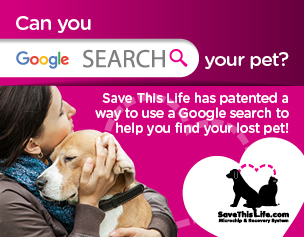Developing a Staff Protocol Against Animal Abuse

When a veterinarian or vet tech observes or provides treatment to an animal that they suspect has been abused or neglected, they know to report their suspicion to the authorities. However, in order to correctly provide the information that could be considered as vital to the outcome, veterinary staff need to be aware of the types of situations to watch out for and, if abuse is observed, the appropriate steps to take. Working with the veterinarian, appropriate staff need to develop protocols to collect and provide pertinent information to support an investigation.
Where to Start to Develop an Animal Abuse Protocol?
To be prepared to handle a case of animal abuse, the veterinary community can find information on the website of the American Veterinary Medical Association (AVMA). On this site, the white paper entitled Practical Guidance for the Effective Response by Veterinarians to Suspected Animal Cruelty, Abuse and Neglect provides information that is relevant to situations involving suspected animal abuse.
Staff members must be prepared to document, as best they can, the abuse. The white paper identifies the following key elements:
Index of Suspicion
-
Provides information on the various types of animal abuse categories, including:
-
Neglect
-
Hoarding
-
Dog fighting
-
Inflicting injuries with intent
-
-
Includes observations that point to signs indicative of animal abuse. Details may be gathered from, for example:
-
Body condition
-
Coat condition
-
Declined medical care
-
Declined assistance for euthanasia when needed
-
Inadequate shelter
-
Unsanitary or dangerous living environment
-
Number of animals
-
Use of veterinary office visits to treat trauma
-
Bite wounds
-
-
Points out characteristics of clients and of an animal that may reveal not only information of cruelty or neglect, but, possibly, the identification of the abuser, and helps staff to recognize relevant information that may help them to better understand the situation.
Identification of Terms
-
Presents the legal definitions of the terms that are associated with animal cruelty and abuse
-
It’s important that veterinary staff be able to recognize, understand, and use these terms correctly. Identified terms include:
-
Animal cruelty
-
Neglect
-
Animal abuse
-
Animal physical abuse
-
Non-accidental injury
-
Animal sexual abuse
-
Fabricated or induced illness
-
Emotional abuse.
Reporting Animal Abuse
-
Identifies the information that is relevant for creating a policy that determines expectations of staff behavior
-
Pinpoints the steps to take if animal abuse is observed, covering areas such as:
-
Responsibility of staff to report observations to appropriate authorities
-
Identifying the agency to report the information to
-
Implementing risk assessment
-
Determining internal reporting procedures
-
Potential need for training that helps with:
-
Recognition of incidents of animal cruelty, abuse, neglect
-
Incident response
-
Collecting and preserving evidence.
-
Protocols and Procedures
-
-
Discusses and provides information on the procedures that will best determine the most effective response plan, including:
-
Client education
-
Situation monitoring
-
Reporting the incident to authorities.
Determining the Steps for Assessing Risk and Reporting to Authorities
-
-
Provides information on creating a decision tree that will enable the practitioner to determine the direction needed to ensure the safety and well-being of the animal
-
Identifies an assessment based on observations and levels of risk in regard to:
-
Clinical history
-
Client behavior
-
Pet behavior
-
Client profile
-
-
Based on the risk assessment, provides an outline of appropriate veterinary responses.
Practitioner Tools: Client Questionnaire
-
Provides an actual client questionnaire to use that will help determine the animal’s risk of being mistreated.
Frequently Asked Questions
-
Identifies answers to questions that pose common concerns. Some relate to areas, such as:
-
Being sued for defamation
-
Disclosure of client or patient information
-
Handling hoarding cases.
-
Developing a protocol for handling cases of suspected animal abuse will involve the time and effort of all staff members. Using this site as a guide, however, will make it easier for everyone to be aware of their responsibilities when working with animals of suspected abuse.
Contact your Covetrus representative online or at 855.724.3461 to find more helpful tips about how to make your practice more efficient and profitable.
Sources:


Working Here
Our team members are encouraged to be the best they can be... at Covetrus we believe we impact one another.
Learn MoreNews & Events
FDA Cautions Pet Owners Not to Feed Texas Tripe Inc. Raw Pet Food Due to Salmonella, Listeria Monocytogenes
The U.S. Food and Drug Administration is cautioning pet owners not to feed their pets any of the Texas Tripe brand raw frozen pet food listed below because several samples of Texas Tripe raw pet food have tested positive for Salmonella and/or L. mono.
Careers
Are you looking for a place to let your talents shine? At Covetrus, we help our practitioner customers better serve their patients and take pride in providing the best customer experience possible. Search our open positions to see our available opportunities.
Newsletter
Stay current with what’s going on with Covetrus, subscribe to receive our newsletter and email communications. Subscribers will receive the latest information in practice management, sales and marketing, animal health, and more.



-3-(1).png?sfvrsn=2d806d73_0)

Leave a comment